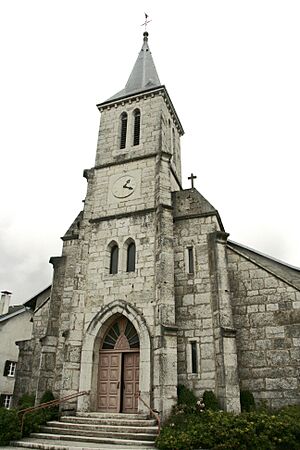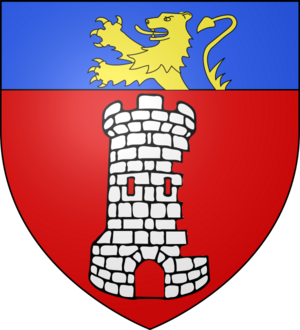Aranc facts for kids
Aranc is a small village, also known as a commune, located in the eastern part of France. It is found in the Ain department, which is part of the Auvergne-Rhône-Alpes region. In 2009, about 297 people lived in Aranc. The people who live there are called Randaoillards.
The main ways people make a living in Aranc are through working with timber (wood from trees), forestry (managing forests), and agriculture (farming). The village has also started projects to encourage tourism, inviting visitors to explore its beauty. Important buildings in Aranc include the Saint-Paul church and several old houses built in the 1700s.
Contents
Discover Aranc: A French Village
Aranc is a charming village in eastern France. It is known for its natural beauty and quiet way of life. The village is part of a larger area called a commune, which is a common way to organize local government in France.
Where is Aranc Located?
Aranc is situated in the Ain department. This department is part of the Auvergne-Rhône-Alpes region. This region is in the eastern part of France. It is known for its mountains and green landscapes.
Who Lives in Aranc?
In 2009, the village of Aranc had a population of 297 people. The people living in Aranc are known as the Randaoillards. This is a special name for the local residents.
How Do People Make a Living in Aranc?
The main jobs and businesses in Aranc are connected to its natural surroundings.
- Timber Production: Many people work with wood. They cut down trees and prepare timber for building or other uses.
- Forestry: This involves managing the forests. It ensures that trees are grown and harvested in a sustainable way.
- Agriculture: Farming is also important. Local farmers grow crops and raise animals.
- Tourism: Aranc is also trying to attract visitors. They want people to come and enjoy the peaceful environment and local sights.
What Can You See in Aranc?
Aranc has some interesting historical places to visit.
- Saint-Paul Church: The Saint-Paul church is a very important building in the village. It has a long history.
- Old Houses: You can also see several houses that were built in the 18th century (the 1700s). These old buildings show the history of the village.
Images for kids
See also
 In Spanish: Aranc para niños
In Spanish: Aranc para niños









